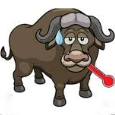Plane Overshoots The Runway In Bali And Goes Into The Sea
-
Recently Browsing 0 members
- No registered users viewing this page.
-
Topics
-
Popular Contributors
-
Latest posts...
-
4,864
-
5
Economics Thailand Considers Importing Up to 5 Million Tonnes of LNG Annually from Alaska
That will never happen from Canada because of its disastrous Net Zero ideology. Sorry Canada, you lose (again) -
4,864
-
27
More Trump Socialism
When did he say that? Through the lens of your distorted lying media outlets, maybe. -
5
Economics Thailand Considers Importing Up to 5 Million Tonnes of LNG Annually from Alaska
Our NG storage has been full for many years, we burn off so much its insane. I doubt anyone can beat or even match our prices. -
89
Molotov Attack at Pro-Israel Rally in Boulder Deemed 'Targeted Terror Attack'
Also Scott Jennings on CNN. “This is horrific and what more do we need to see, Jake, before we realize this Free Palestine movement is nothing more than a domestic terror organization right now.”
-
-
Popular in The Pub
-











.thumb.png.59631667ecf82c97db947523760c9cdd.png)
Recommended Posts
Create an account or sign in to comment
You need to be a member in order to leave a comment
Create an account
Sign up for a new account in our community. It's easy!
Register a new accountSign in
Already have an account? Sign in here.
Sign In Now